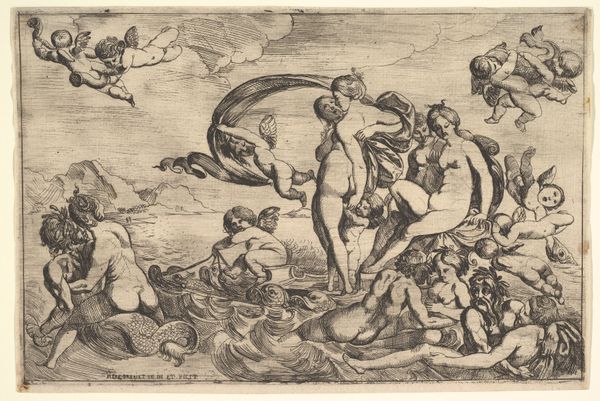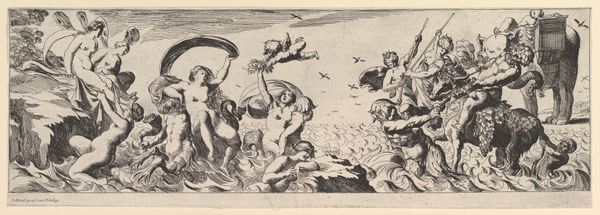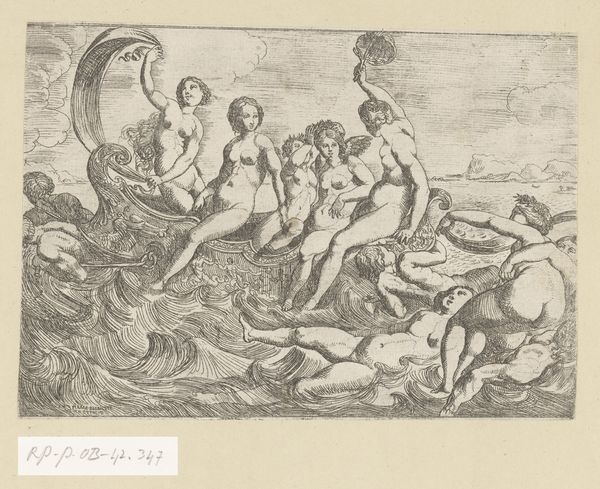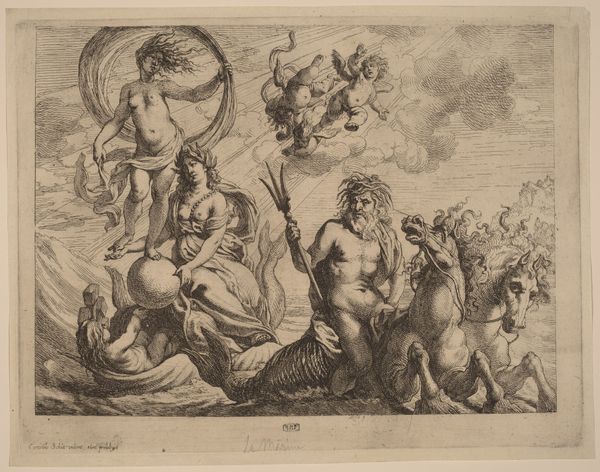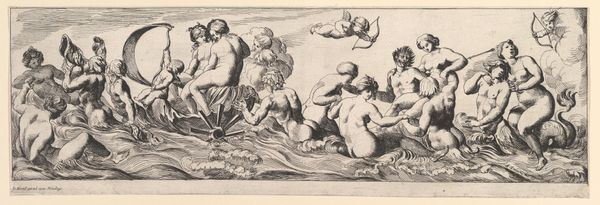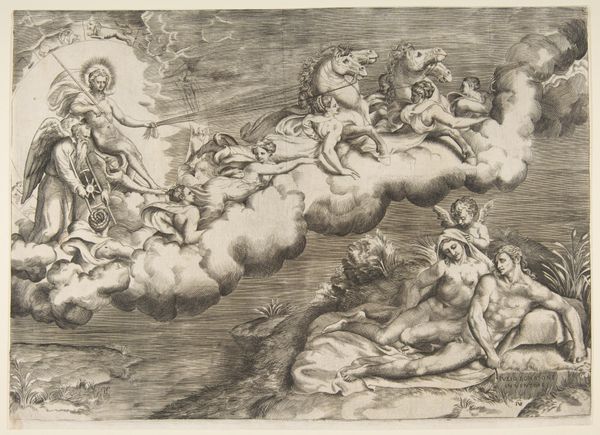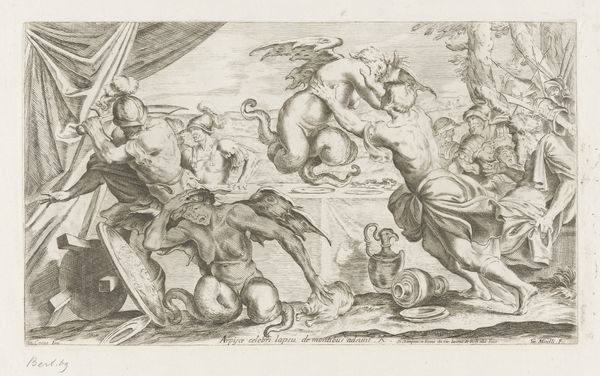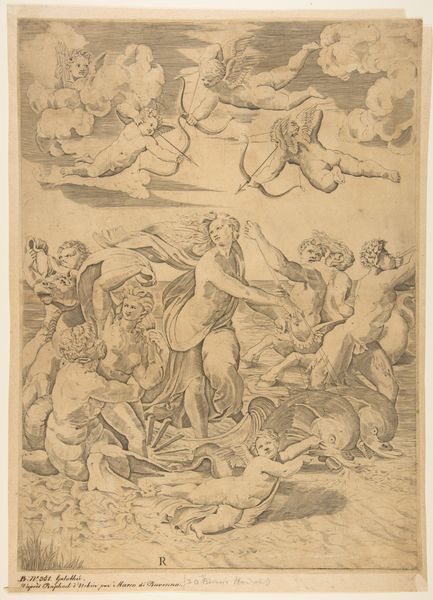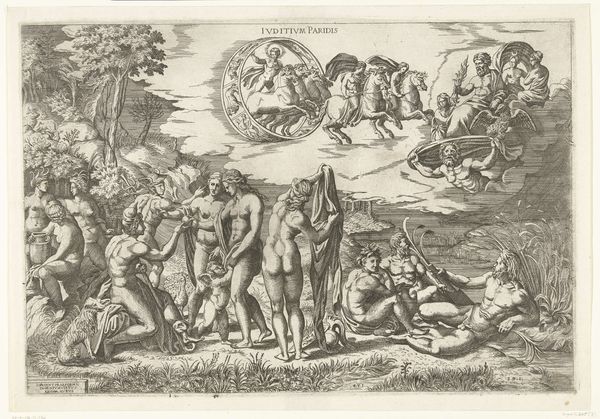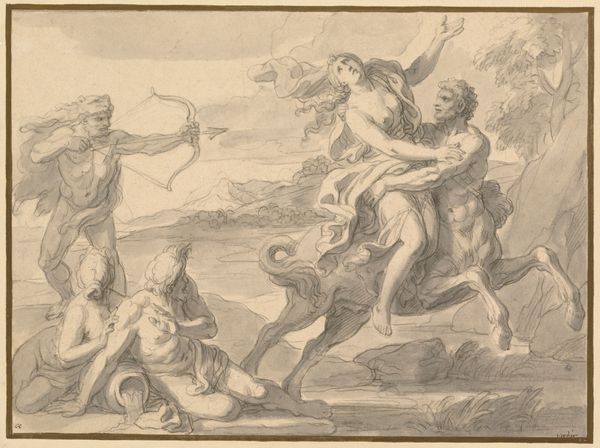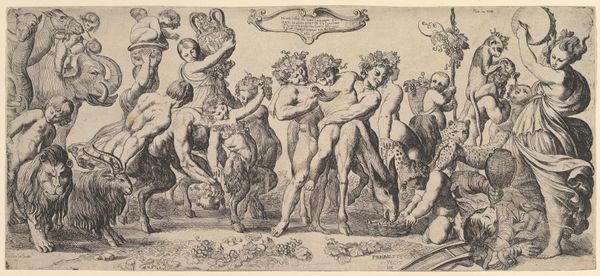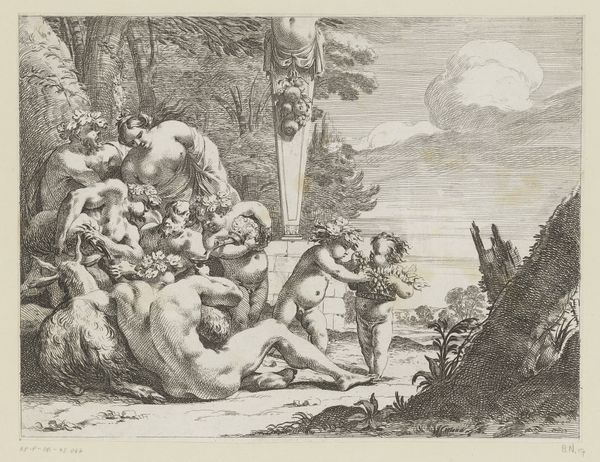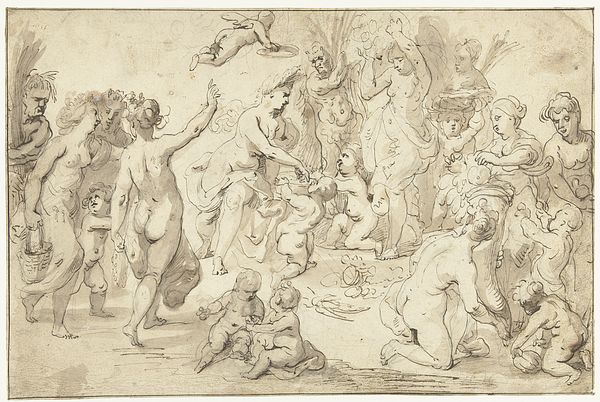
drawing, print, ink, pen, engraving
#
drawing
#
allegory
#
baroque
# print
#
figuration
#
ink
#
cupid
#
pen
#
nude
#
engraving
Dimensions: Sheet: 4 13/16 x 6 15/16 in. (12.3 x 17.7cm)
Copyright: Public Domain
Curator: What a frenzy! Like a party invitation from the deep, slightly overwhelming. I feel I’m drowning a bit just looking at it. Editor: I understand entirely. It’s an overwhelming composition. This is Pierre Brebiette’s “The Triumph of Galatea,” a pen and ink drawing later transformed into an engraving, placing it somewhere between 1610 and 1642. What draws me in is not just the Bacchanalian vibe, but what it symbolizes: an era's vision of beauty, desire, and idealized form. Curator: Well, Galatea seems quite chuffed to be riding atop a dolphin… or is it a sea monster? It is so difficult to identify some creatures, because they are strange even from afar, even as an idea. Anyway, she’s clearly enjoying herself, along with all those other nude figures. Cupids are shooting arrows—everyone’s involved. It’s rather exuberant, but so stylized it is hard to grasp if anyone is sincere. It’s the old symbolic conundrum again, I suppose: what is it concealing as much as revealing? Editor: The nudity absolutely situates this work within a long tradition of allegorical and mythological scenes that hark back to classical ideals, albeit filtered through the Baroque lens. The sea, often seen as a feminine realm, becomes the stage for love’s chaotic dance, and that central cluster of figures are likely the three graces, symbolizing beauty, charm and joy. The cupids might represent divine intention but also desire's disruptive potential. And there’s definitely some of that disruption here. The emotional tone of the image could be described as forced. Is it the artist trying too hard to convince the viewer of happiness? Curator: Perhaps. Consider the cultural memory associated with these stories. Galatea's triumph isn't just a personal victory but reflects a wider societal ideal, or rather the tension between freedom and restraint, chaos and order. By the way, isn't the dolphin pulling double duty as a phallic symbol? Editor: Ha! Very astute. Symbolism breeding symbolism. Do you think a contemporary audience would see the layers and complexities of this scene in the same way? I’d bet not. Curator: Unlikely. Though, perhaps its very exuberance – all that implied sensual energy – could still resonate today, even if the specifics have faded into the background noise of history. What a great image to explore in our current collection. Editor: Exactly. Seeing and feeling our contemporary condition of existing on Earth through art created several centuries ago can only reveal that many things we assume about our human reality have hardly changed since then. Thank you for helping me think this through.
Comments
No comments
Be the first to comment and join the conversation on the ultimate creative platform.
